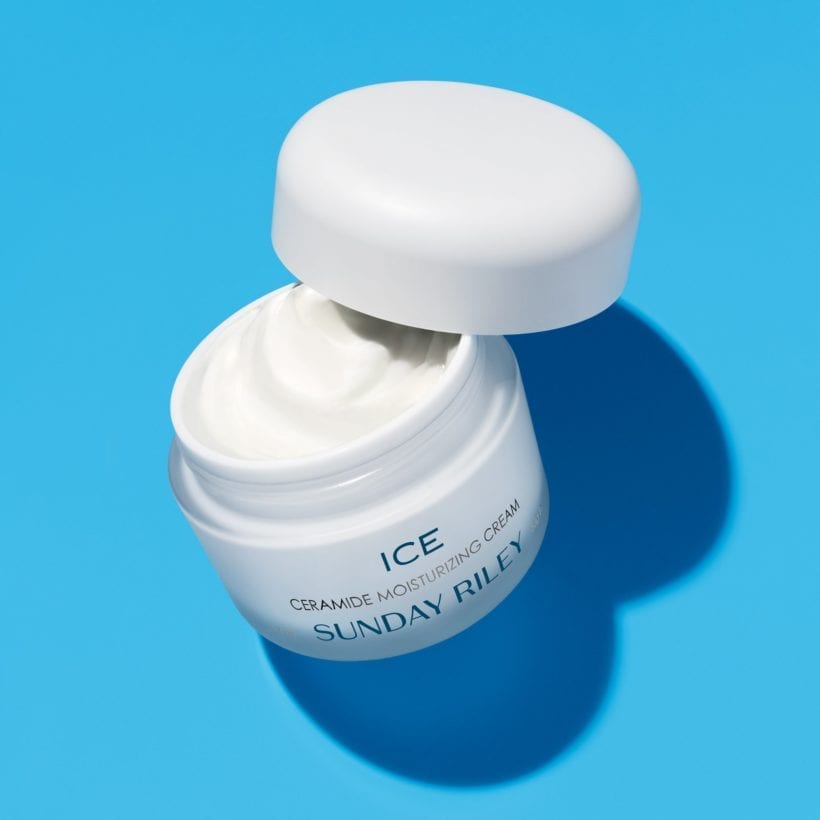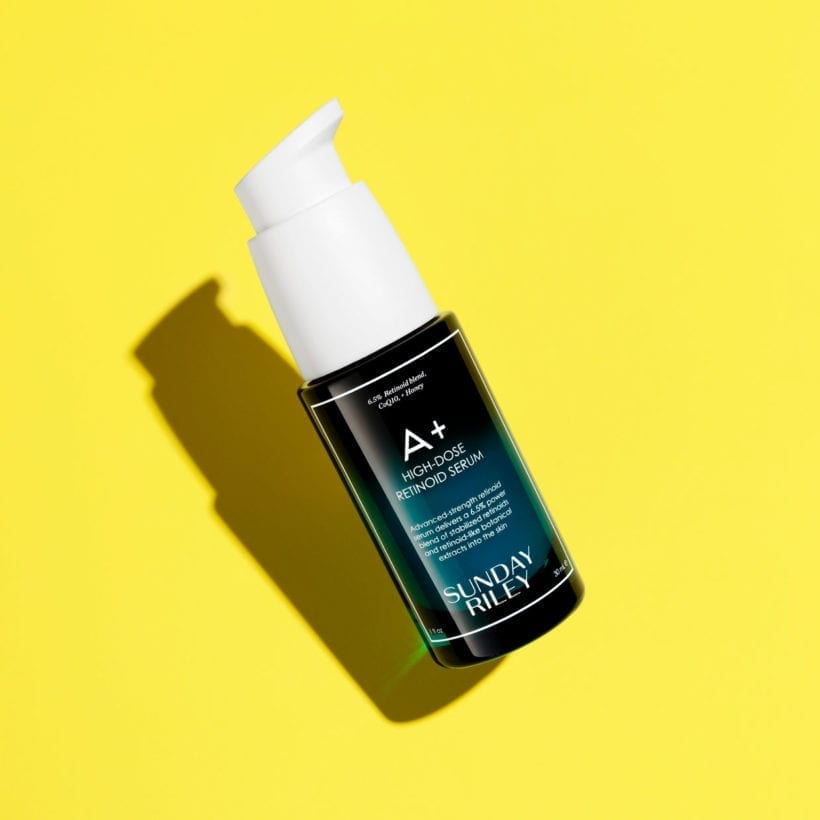Although you may have your skincare VIPs on lock, when you’re facing colder temperatures and harsh environmental aggressors (i.e. hydration-zapping indoor heat and blistering wind), your complexion may need a targeted tool kit. “The key to surviving winter skin — redness, dryness, flakiness, irritation, itching, overall sensitivity — is to add ingredients that will help nourish, hydrate and protect the skin,” says Geneva-based dermatologist, Luigi L. Polla, M.D., founder of Forever Institut and Alchimie Forever. We tapped into the genius of two top pros to map out the skincare must-haves your skin needs this winter.
Meet the Experts
Luigi L. Polla, M.D., is a Geneva-based dermatologist and founder of Forever Institut and Alchimie Forever.
Joshua Zeichner, M.D., is an N.Y.C.-based board certified dermatologist.
1. Ceramides
“Ceramides are a key component of the skin’s existing barrier, making them essential not just to nourish, but also to help the skin maintain its moisture levels more efficiently,” explains Polla.
Joshua Zeichner, M.D., an N.Y.C.-based board certified dermatologist, notes that “ceramides are natural fats found in the outer skin layer — think of them like the grout between tiles — when you’re missing grout, water will leak through.” The result is what experts call “transepidermal water loss” which is particularly common in colder climates when a compromised skin barrier is likely due to excessive environmental elements.
Zeichner recommends applying a ceramide-based cream “to help hydrate and soften to replenish the outermost skin layer and help maintain a healthy barrier during the winter,” he explains. “Ceramides in skincare products mimic those naturally in skin, and because ceramides are such large molecules they don’t penetrate deep into the skin but rather sit on the surface like a protective seal.”
2. Niacinamide
Niacinamide is a buzz-worthy powerhouse that’s popping up in many new serums and creams. “Niacinamide, a form of vitamin B3, is an excellent ingredient in skincare,” says Polla. “I think of it first and foremost as beneficial for an uneven skin tone and to help with the appearance of pores, however it also helps stimulate the production of ceramides, so it can certainly be incorporated in a winter skin routine.”
Along with it helping curb water loss, another cold-weather pro is that it “it soothes and brightens the skin so it’s a great option to even out skin tone and lighten dark spots, plus it can be used across all skin types without causing irritation,” explains Zeichner, who suggests opting for this hero ingredient in a dedicated serum and layering it under your go-to moisturizer day and night. “Since it is non-irritating, it’s a great option for the dry, sensitized skin you may be experiencing in winter time.”
3. Vitamins C & E

This dynamic duo are well known skincare MVPs. And while they can easily get overshadowed by new and noteworthy ingredients, experts continue to tout their complexion benefits especially when it comes to elevating your winter routine.
“Vitamin C is a potent antioxidant that has several benefits in the skin,” says Zeichner. “First, it helps neutralize free radicals damage to protect from UV light, second it interferes with production of abnormal pigmentation to help lighten dark spots and is a cofactor essential for the production of healthy collagen.” He suggests scanning skincare for a vitamin C Ester such as THD ascorbate. “This oil form of vitamin C tends to be more soothing and less irritating and gentler on the skin barrier than the pure, water soluble ascorbic acid form, which is a great option for the warmer months when skin is more oily.”
Vitamin E, Polla says it’s as classic of a hydrator as it gets. “Vitamin E nourishes and protects the skin’s natural barrier and it also boasts potent antioxidant benefits,” notes Polla, who says to make sure Tocopheryl Acetate or Tocopherol Polla is high up on the ingredient list. As for why they often come paired together? Sure, they have pros solo but when combined, they offer a more effective and stable formula.
4. Bakuchiol
By now you’re well versed in why you should be incorporating a prescription-strength retinol or an over-the-counter retinol into your skincare arsenal. If you’re a retinol devotee and can use it sans any backlash (i.e. dryness, redness, flaking, etc.), you know very well the benefits — brighter, more even skin tone, less fine lines now (and in the future), smoother texture, perhaps even fewer breakouts and more. But if you have sensitive skin 365 or your skin simply doesn’t tolerate the OTC or Rx version of the vitamin A derivative when facing winter-like elements, experts are all about bakuchiol, a botanical derivative that acts like retinol. Here’s why: “Bakuchiol is considered by many to be nature’s retinol,” Zeichner notes. “Similar to retinol, it helps rev up collagen production to strengthen the skin and so it helps improve the appearance of fine lines and wrinkles, however, while not as potent as retinol, it does not cause irritation, making it a great option for winter.”
5. Azelaic Acid
When your face is faced (literally) with skyrocketing indoor heat skyrockets as well as plummeting cold temperatures, it could seem like your complexion is in a never-ending dry, irritated cycle while perhaps battling some breakouts and overall redness, too.
“Contrary to the impression the name gives off, azelaic acid does not exfoliate the skin — it is actually a sugar found in rye, wheat and barley, that brightens by blocking the production of abnormal pigmentation,” says Zeichner. “Plus, it’s a useful ingredient in treating conditions like acne and rosacea because of its anti-inflammatory benefits.” The reason it’s a win-win for winter is that “it’s not too strong or irritating, so it can be used daily for those with generally sensitive skin,” he adds.
6. Squalane
 “Winter is the perfect time to incorporate a more occlusive product in your routine, and facial oils are the perfect vehicle to do so,” recommends Polla. “Squalane in particular is an oil that helps create a barrier and protect skin, plus it also has antioxidant properties.” Polla points out that most skincare contains squalane, a lab-made molecule derived from sugarcane or olives that mimics squalene, which is naturally found in shark liver as well as human sebum. The squalane version has the upsides of being more lightweight (read: not as pore-clogging) as well as being more stable, plus cruelty free. Because squalene makes up approximately 10 percent of your skin’s oil naturally, and has a high concentration of essential fatty acids, keeping it there, especially in the winter is crucial to claim healthy-looking skin. Polla recommends those with oily or acne-prone skin types to limit the use of oils, such as squalane, “to one or two evenings per week; while dry skin types can use it daily in the evening.”
“Winter is the perfect time to incorporate a more occlusive product in your routine, and facial oils are the perfect vehicle to do so,” recommends Polla. “Squalane in particular is an oil that helps create a barrier and protect skin, plus it also has antioxidant properties.” Polla points out that most skincare contains squalane, a lab-made molecule derived from sugarcane or olives that mimics squalene, which is naturally found in shark liver as well as human sebum. The squalane version has the upsides of being more lightweight (read: not as pore-clogging) as well as being more stable, plus cruelty free. Because squalene makes up approximately 10 percent of your skin’s oil naturally, and has a high concentration of essential fatty acids, keeping it there, especially in the winter is crucial to claim healthy-looking skin. Polla recommends those with oily or acne-prone skin types to limit the use of oils, such as squalane, “to one or two evenings per week; while dry skin types can use it daily in the evening.”
7. Jojoba Oil
This hydrator is laced into many formulas — for face and body — and for good reason. According to Polla, “jojoba oil is an antioxidant that is particularly emollient and moisturizing, has a very good affinity for intercellular epidermal lipids and is compatible with sebum therfore it hydrates the skin without leaving a greasy film,” he explains. “Also, it isn’t comedogenic and is thus ideal for a skin type that is typically oily.” Look for it touted on the label as is — simply jojoba oil — or it’s more scientific term simmondsia chinensis seed oil.
8. Hyaluronic Acid
You likely already have hyaluronic acid somewhere in your skincare routine — albeit a serum, sleep mask or face cream — because of its mega moisturizing properties that instantly leave skin feeling soft, smooth and plump. “Hyaluronic acid can hold up to 1000 times its weight in water, and it is a non-oily ingredient which makes it perfect for all skin types,” Polla explains.
While all of the above clearly make this humectant a year round staple, it can be particularly useful in the winter when drying indoor heat is acting like a vacuum, sucking water out of the top layers of your skin. However, it’s super important to use it correctly. If you simply slather an HA serum on with nothing on top, it can’t work its moisturizing magic because the water it just replenished will evaporate, too. “Layering a hyaluronic acid serum under an emollient moisturizer is key to help keep the skin nourished,” explains Polla.
We only recommend products we have independently researched, tested, and loved. If you purchase a product found through our links, Sunday Edit may earn an affiliate commission.


















